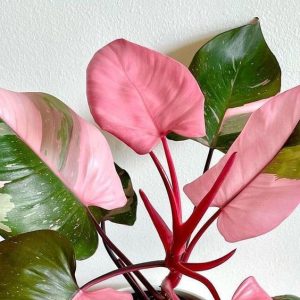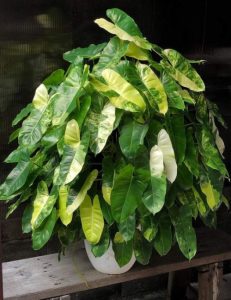- English
- Chinese
- French
- German
- Portuguese
- Spanish
- Russian
- Japanese
- Korean
- Arabic
- Irish
- Greek
- Turkish
- Italian
- Danish
- Romanian
- Indonesian
- Czech
- Afrikaans
- Swedish
- Polish
- Basque
- Catalan
- Esperanto
- Hindi
- Lao
- Albanian
- Amharic
- Armenian
- Azerbaijani
- Belarusian
- Bengali
- Bosnian
- Bulgarian
- Cebuano
- Chichewa
- Corsican
- Croatian
- Dutch
- Estonian
- Filipino
- Finnish
- Frisian
- Galician
- Georgian
- Gujarati
- Haitian
- Hausa
- Hawaiian
- Hebrew
- Hmong
- Hungarian
- Icelandic
- Igbo
- Javanese
- Kannada
- Kazakh
- Khmer
- Kurdish
- Kyrgyz
- Latin
- Latvian
- Lithuanian
- Luxembou..
- Macedonian
- Malagasy
- Malay
- Malayalam
- Maltese
- Maori
- Marathi
- Mongolian
- Burmese
- Nepali
- Norwegian
- Pashto
- Persian
- Punjabi
- Serbian
- Sesotho
- Sinhala
- Slovak
- Slovenian
- Somali
- Samoan
- Scots Gaelic
- Shona
- Sindhi
- Sundanese
- Swahili
- Tajik
- Tamil
- Telugu
- Ukrainian
- Urdu
- Uzbek
- Vietnamese
- Welsh
- Xhosa
- Yiddish
- Yoruba
- Zulu
- Kinyarwanda
- Tatar
- Oriya
- Turkmen
- Uyghur

ผู้ที่ชื่นชอบพืชชอบ philodendron เพื่อการเจริญเติบโตที่สวยงามและใบทรงกลม ฟิโลเดนดรอนเป็นพืชใบในร่มซึ่งมีความต้องการน้ำเป็นปัจจัยหลักในการดูแลพืช การทราบความต้องการน้ำของฟิโลเดนดรอนสามารถช่วยให้ชาวสวนรักษาต้นไม้ให้อยู่ในสภาพดี หลีกเลี่ยงโรคที่พบบ่อย และรับประกันความสวยงามของการตกแต่ง

philodendron
ความต้องการน้ำ Philodendron ที่เรียบง่าย
มีการหาน้ำเป็นพิเศษใน Philodendron มันชอบที่จะไม่สะสมน้ำ แต่จะต้องรักษาดินให้เปียก ในขณะที่น้ำมากหรือน้อยเกินไปอาจมีผลเสียต่อพืช แต่เทคนิคการรดน้ำที่เหมาะสมอาจกระตุ้นให้เกิดการพัฒนาที่ดีของ Philodendron การดูแล philodendron ที่ดีขึ้นอยู่กับการรู้ถึงความต้องการการรดน้ำขั้นพื้นฐาน
ก่อนอื่นต้องดูแลดิน Philodendron ให้เปียกบ้าง ควรใช้น้ำอย่างเหมาะสมเมื่อพื้นผิวดินแห้ง แม้ว่าน้ำที่ไม่เพียงพออาจทำให้ใบของพืชแห้งและขอบกลายเป็นสีเหลือง แต่น้ำที่เพียงพออาจทำให้น้ำสะสมที่ราก ส่งผลให้รากเน่าและโรคพืชได้ ดังนั้นจึงเป็นเรื่องสำคัญที่จะต้องทำให้ตารางการรดน้ำและเทคนิคที่เหมาะสมสมบูรณ์แบบ
กำหนดการรดน้ำและความถี่
ปัจจัยหลายประการมีอิทธิพลต่อความถี่ในการรดน้ำ รวมถึงสภาพแวดล้อม ความแปรผันตามฤดูกาล และระยะการพัฒนาของพืช ในขณะที่ในฤดูใบไม้ร่วงและฤดูหนาว อัตราการเจริญเติบโตของพืชจะช้าลง และความถี่ในการรดน้ำจะต้องลดลง โดยทั่วไป Philodendron ต้องการการรดน้ำบ่อยมากขึ้นในช่วงฤดูการเจริญเติบโตสูงสุดในฤดูใบไม้ผลิและฤดูร้อน
ฟิโลเดนดรอนเติบโตเร็วกว่าในฤดูใบไม้ผลิและฤดูร้อน และความชื้นในดินก็ถูกใช้เร็วขึ้นเช่นกัน ตอนนี้คุณควรรดน้ำสัปดาห์ละครั้งและเปลี่ยนให้ทันเวลาตามความแห้งของดิน วิธีที่ดีวิธีหนึ่งในการค้นหาว่าจำเป็นต้องรดน้ำหรือไม่คือการตรวจสอบระดับความชื้นของดินที่พื้นผิว การรดน้ำอาจทำได้ลึก 2-3 เซนติเมตรบนพื้นผิวดิน
อัตราการเติบโตของฟิโลเดนดรอนช้าลงและความต้องการน้ำก็ลดลงในฤดูใบไม้ร่วงและฤดูหนาวด้วย โดยปกติความถี่ในการรดน้ำอาจลดลงทุกๆ สองสัปดาห์ในช่วงเวลานี้ ในพื้นที่เย็น การคายน้ำของพืชจะลดลงและความชื้นในดินจะถูกเก็บไว้นานขึ้น ดังนั้นการจำกัดการรดน้ำอาจช่วยหลีกเลี่ยงปัญหารากที่เกิดจากความชื้นในดินสูงเกินไป
เทคนิคการรดน้ำ
การพัฒนาที่ดีต่อสุขภาพของ Philodendron ขึ้นอยู่กับเทคนิคการรดน้ำที่เหมาะสม ต่อไปนี้เป็นเทคนิคการรดน้ำที่มีประสิทธิภาพ:
การรดน้ำควรทำเช่นนั้นเพื่อให้พื้นดินอาจครอบคลุมอย่างเท่าเทียมกัน หลีกเลี่ยงการโฟกัสน้ำในภูมิภาคเดียวเนื่องจากอาจนำไปสู่ดินแห้งในพื้นที่อื่น ๆ และน้ำมากเกินไปในพื้นที่ราก การใช้การรดน้ำสามารถช่วยให้คุณกระจายน้ำได้อย่างเป็นธรรมเหนือพื้นผิวดินเพื่อให้ทั้งชั้นของดินชื้น
Philodendron ไม่ชอบการสะสมน้ำที่รากดังนั้นจึงให้ความสนใจอย่างใกล้ชิดกับการระบายน้ำระหว่างการรดน้ำ เลือกดินที่มีการระบายน้ำอย่างเพียงพอจากนั้นตรวจสอบด้านล่างของกระถางดอกไม้สำหรับรูระบายน้ำที่เพียงพอ ตรวจสอบว่าน้ำสะสมอยู่ในตัวถังหลังจากรดน้ำหรือไม่ จากนั้นล้างน้ำที่เก็บไว้อย่างค่อยเป็นค่อยไปเพื่อป้องกันการแช่ราก
น้ำควรเป็นอุณหภูมิห้อง สิ่งนี้จะช่วยป้องกันอันตรายต่อพืชด้วยน้ำเย็นหรือน้ำร้อนเกินไป รากของพืชอาจประสบกับน้ำเย็นหรือน้ำร้อนนำไปสู่การพัฒนาหรืออันตรายที่ไม่ดี การรักษาอุณหภูมิน้ำที่คล้ายกับอุณหภูมิห้องช่วยให้ Philodendron ดูดซับได้ดีขึ้น
การพัฒนาความชื้นในดิน
ความลับในการแก้ไขการชลประทานคือความรู้เกี่ยวกับความชื้นในดิน นี่เป็นวิธีการตรวจจับความชื้นในดินที่มีประสิทธิภาพ:
วางนิ้วของคุณลึก 2-3 ซม. ลงไปที่พื้น หากดินดูแห้งคุณต้องรดน้ำ หากพื้นดินยังเปียกอยู่คุณควรรอก่อนรดน้ำ วิธีการที่ง่ายและมีประโยชน์นี้อาจช่วยตรวจสอบความแห้งของดิน
เครื่องวัดความชื้นในดินเป็นเครื่องมือตรวจจับที่แม่นยำยิ่งขึ้นซึ่งจะช่วยให้สามารถประเมินปริมาณความชื้นในดินได้อย่างแม่นยำ หลังจากวางเครื่องวัดความชื้นลงในพื้นแล้วให้ประเมินปริมาณความชื้นของโลกขึ้นอยู่กับการอ่าน ลดความผิดพลาดของมนุษย์และเสนอฐานที่สอดคล้องกันมากขึ้นสำหรับการรดน้ำเครื่องวัดความชื้นอาจ
ความกังวลและการแก้ไขโดยทั่วไป
ในขณะที่คุณรักษา philodendron คุณอาจพบปัญหาการรดน้ำทั่วไป ต่อไปนี้เป็นปัญหาและวิธีแก้ปัญหาทั่วไป:
โดยปกติแล้วรากเน่าเป็นผลมาจากการที่น้ำมากเกินไปทำให้เกิดน้ำขังในพื้นดิน การลดความถี่ในการรดน้ำและการตรวจสอบการระบายน้ำของดินจะช่วยแก้ปัญหานี้ได้ หากพบว่ารากเน่า ควรค่อยๆ นำพืชออกจากภาชนะ ควรตัดรากที่เน่าเปื่อยออกและแทนที่ด้วยดินที่ระบายน้ำได้ดี
โดยปกติการขาดน้ำเพียงพอจะทำให้ใบแห้ง คำตอบคือต้องรับประกันว่าดินจะค่อนข้างเปียกอยู่เสมอและเพิ่มความถี่ในการรดน้ำ นอกจากนี้การพ่นละอองน้ำยังช่วยเพิ่มความชื้นในอากาศ จึงช่วยบรรเทาอาการแห้งของใบได้
การระบายน้ำในดินไม่เพียงพอหรือการรดน้ำมากเกินไปอาจทำให้ใบเหลืองได้ ตรวจสอบความเปียกชื้นและการระบายน้ำของดิน เปลี่ยนความถี่การรดน้ำ ตรวจสอบให้แน่ใจว่าพื้นดินไม่ชื้นเกินไป หากปัญหาสีเหลืองรุนแรง คุณอาจต้องพิจารณาเปลี่ยนดินและดูว่าศัตรูพืชและความเจ็บป่วยส่งผลต่อพืชหรือไม่

philodendron
การพัฒนาที่เหมาะสม ของ Philodendron ขึ้นอยู่กับความต้องการน้ำเป็นอย่างมาก การบำรุงรักษาที่ดีเริ่มต้นด้วยการทราบความต้องการรดน้ำขั้นพื้นฐาน รวมถึงความถี่ เทคนิค และเครื่องมือตรวจจับความชื้นในดินที่เหมาะสม การเรียนรู้วิธีรดน้ำที่ถูกต้องจะช่วยให้คุณหลีกเลี่ยงปัญหาน้ำโดยทั่วไปและรับประกันว่า Philodendron จะรักษาสภาพการเจริญเติบโตที่เหมาะสมที่สุดในสภาพแวดล้อมภายในอาคาร ผลกระทบด้านสุขภาพและความสวยงามของฟิโลเดนดรอนจะดีกว่าหากใครก็ตามตรวจสอบสภาพของพืชเป็นประจำ และปรับเปลี่ยนตารางการรดน้ำให้เหมาะสมกับฤดูกาลและสภาพแวดล้อมต่างๆ
ข่าวก่อนหน้า
สภาพแวดล้อมที่เติบโตดีที่สุดสำหรับ Philodendronข่าวถัดไป
การจัดการกับ philodendron overgrowth


